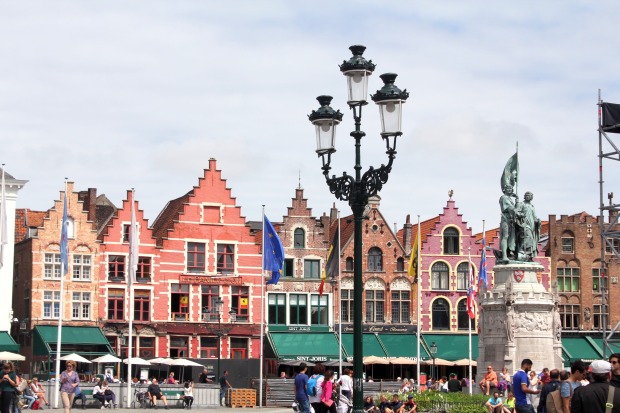
Part of the Markt (market square)
Being on holidays is great because it means even if you have got no money, you still have some time. You can take advantage of this free time to explore cities that are not far away from yours ; the ones you tell yourself you will eventually visit next weekend, but you end up never going to. That’s what I did last Saturday, when i went to Bruges, in Belgium.
Bruges is only 1h away from my house, one of the perks of living in the North of France. It is the capital and largest city of the province of West Flanders in the Flemish Region of Belgium, in the northwest of the country. Sometimes also called the Venice of the North, one can understand better why the historic city centre is a prominent World Heritage Site of UNESCO – it is simply beautiful.
Maybe you have heard of Bruges from the movie “In Bruges”, by the British director Martin McDonagh, starring Colin Farrell and Brendan Gleeson, which is set almost entirely in the city, or in the movie “The Monuments Men”, with the story of the removal of the Madonna of Bruges by the Nazis. But I’m guessing a little history will not hurt, and personally, I did not know much about the city. So, shall we ?
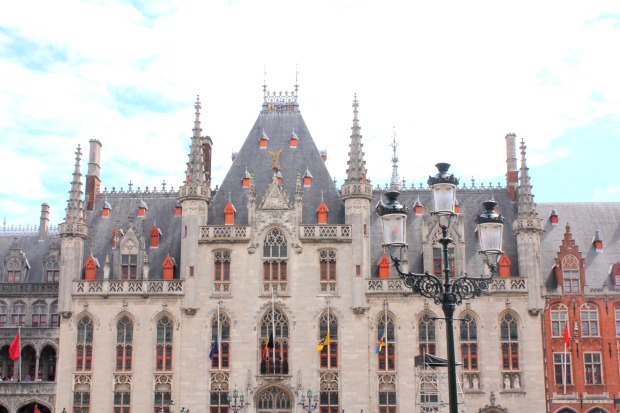
The Provinciaal Hof
Origins
The name of the city probably derives from the Old Dutch for “bridge”: brugga.
The first fortifications in the surroundings of Bruges were built after Julius Caesar’s conquest of the Menapii (1st century BC) in order to protect the area from pirates. Then the Franks took over, thus expelling the Gallo-Romans from the region around the 4th century. The region’s fortifications were reinforced because of the Viking incursions of the 9th century, the same time around which early medieval habitation started.
The importance of Bruges grew larger thanks to the tidal inlet, also known as the Golden Inlet at the time, which contributed positively to local trade. In addition, it has a strategic location, at the crossroads of the northern Hanseatic League trade and the southern trade routes. Bruges was also part of the circuit of the Flemish and French cloth fairs at the beginning of the 13th century.
When the system broke down, the entrepreneurs of the city innovated and took inspiration from Italy and its new forms of merchant capitalism which encouraged foreign traders to come. It was in 1277 that the first merchant fleet from Genoa came to Bruges, first of the merchant colony that made Bruges the main link to the trade of the Mediterranean.
In the 12th century, the city’s fortifications were used to protect surpluses from the wool industry notably, and after the wool monopoly ended, the Basques became the most important merchants in the city. They even established their own commercial consulate in the mid-15th century.
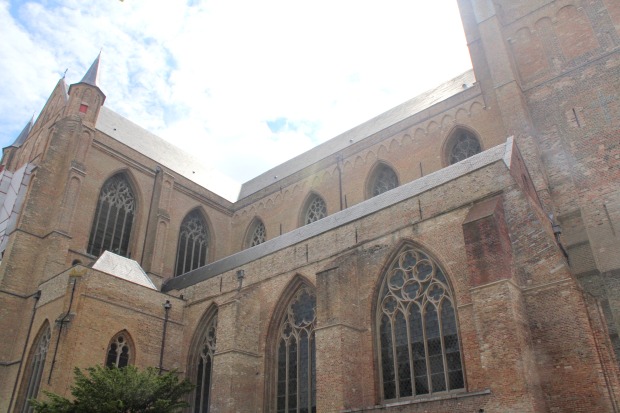
This period was very beneficial to Bruges because it was the time when Philip the Good, Duke of Burgundy, set up court (as well as in Brussels and Lille), which attracted many artists, bankers and other important personalities from all over Europe. Bruges also had a reputation : its weavers and spinners were recognized as the best in the world. In addition, the arts flourished in Bruges : new oil-painting techniques of the Flemish school gained world renown while the first book in English ever printed was published in Bruges by William Caxton.
During the 17th century, the lace industry took off. However, despite efforts of modernization, Bruges became impoverished, people fled the city, and its population decreased dramatically.
It is thanks to tourism that the Venice of the North regained its attractiveness, starting in the mid 19th century. It became one of the world’s first tourist destinations for wealthy British and French tourists. After 1965, the buildings of the medieval city were restored which boosted international tourism, culminating in the city being designated European Capital of Culture in 2012. It now attracts some 2 million tourists annually.
Sight-seeing in Bruges
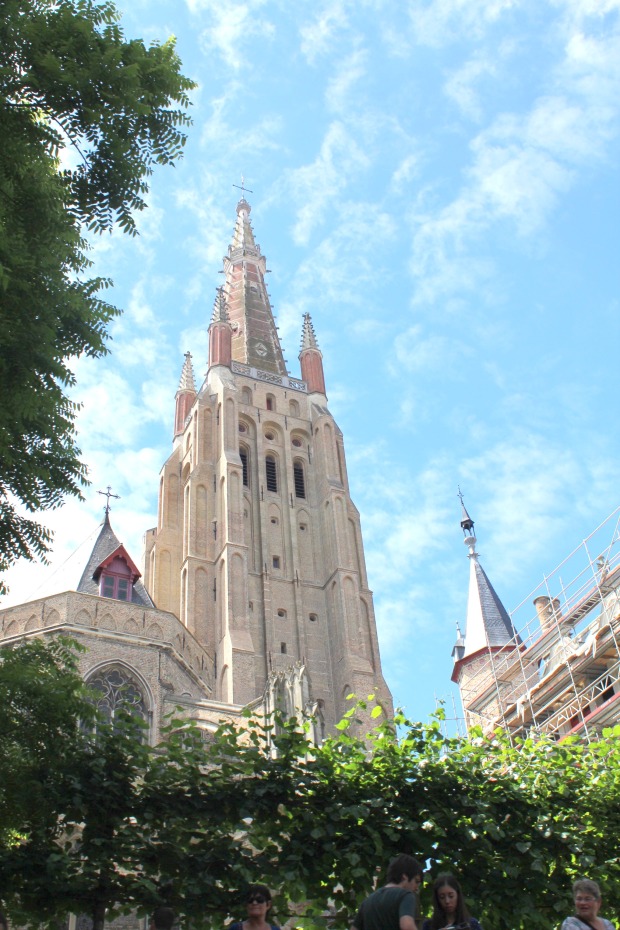
The Church of our Lady
As I said, Bruges is a magical city full of history. Almost all of its buildings for the medieval era are worth seeing. The Church of Our Lady is particularly impressive as its brick spire reaches 122.3 m (401.25 ft), making it the second tallest brickwork tower in the world ! The sculpture Madonna and Child, which can be seen in the transept, is believed to be Michelangelo’s only sculpture to have left Italy within his lifetime.
Bruges’ most famous landmark is probably its 13th-century belfry, housing a municipal carillon comprising 48 bells. It is still used : indeed, the city employs a full-time carillonneur, who gives free concerts on a regular basis.
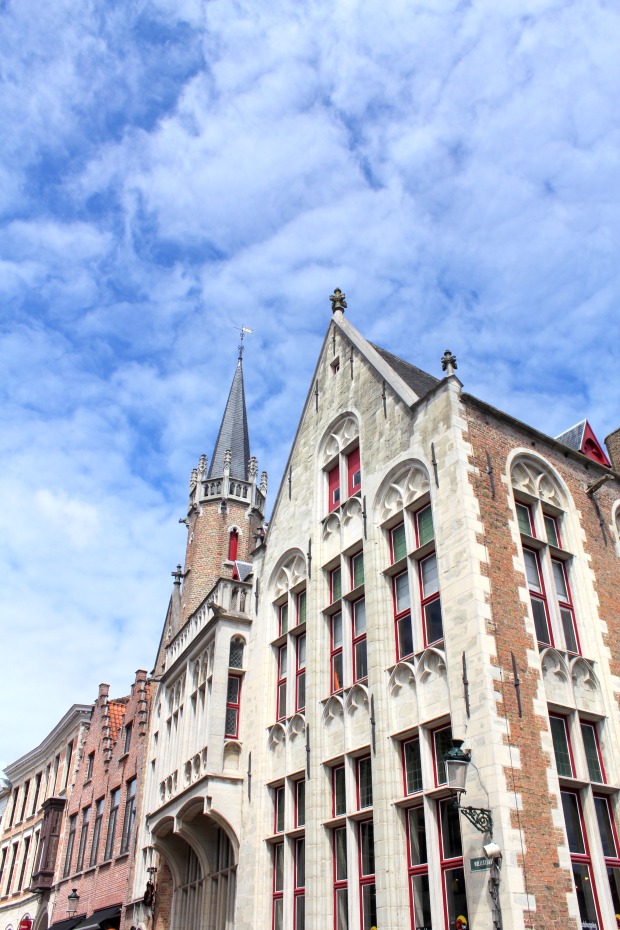
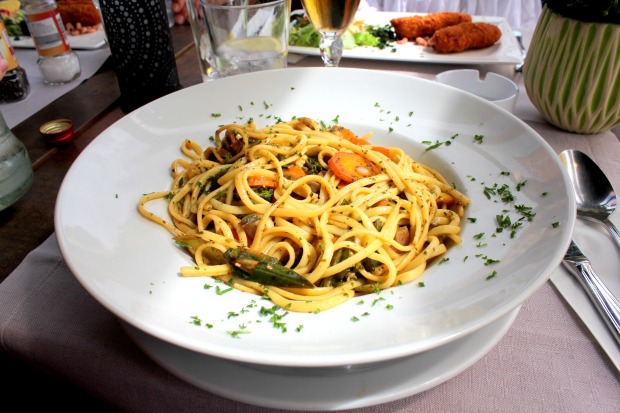
We arrived around 11:30am, and after wandering in the streets of the city and seeing the belfry, we stopped for lunch in one of the many restaurants of the market square. I had the vegetarian linguine – a generous portion, however a bit too salty and greasy. Besides, be careful because the city is quite expensive : my meal was 19€, and generally all the museums and attractions are about 8 to 10 € per person, even the small things such as going at the top of the belfry ! So if you are just there for a day and with a limited budget, I would advise you to pick just one museum, and for the rest of your day to just wander in the old streets.
After our meal, we decided to try the visit of the Grogenerei (the canals). It’s about 30 minute long, and 8€ per person. Despite the apparent long queue, we only waited for like 15-20 minutes. I really enjoyed it : it was a sunny day, the buildings are beautiful, and our guide was really funny and provided us with historical facts which was really interesting. I really recommend you do this. Here’s what you’ll be able to see :
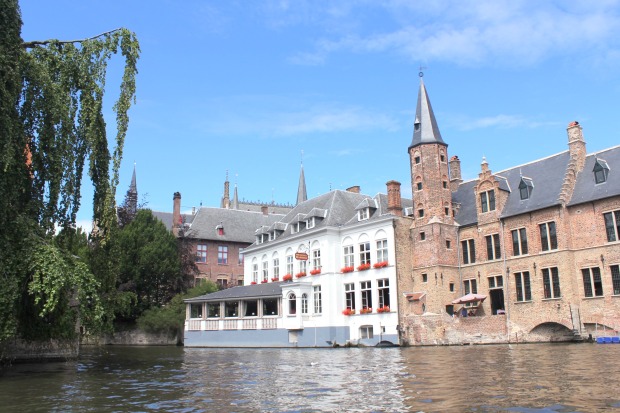
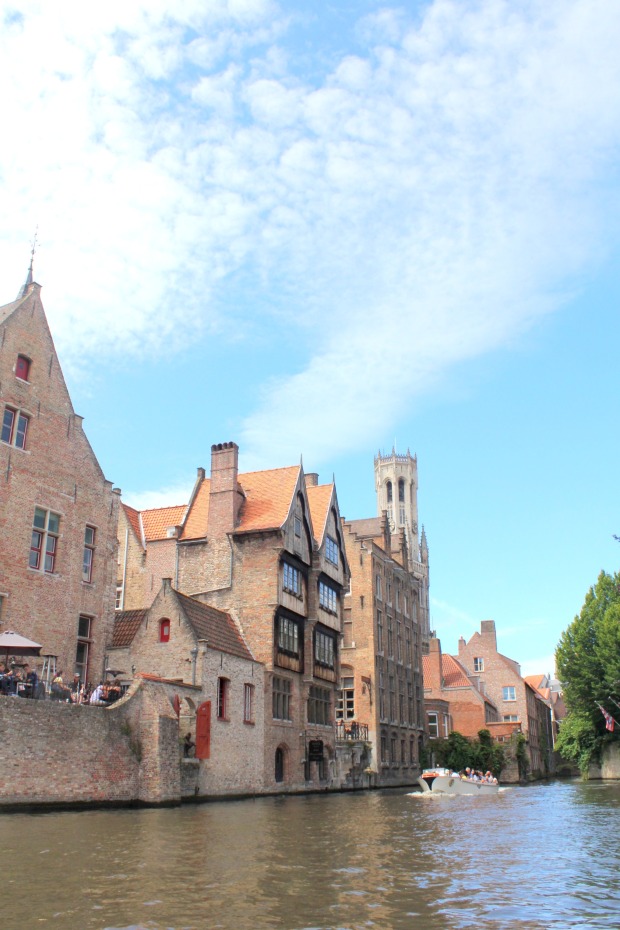

After wandering some more in the streets, seeing the old flee market, chilling in the sun and missing a free harp concert (so sad), we went home in the late afternoon (some almost got sunburnt, though I’m not going to name names !).
This day away was really enjoyable and we were lucky with the weather. Bruges is a charming little city that is worth discovering if you’re in the area ! But remember to maybe plan your day if you’re on a budget, and don’t be surprise if you go during summer as it can be quite packed.

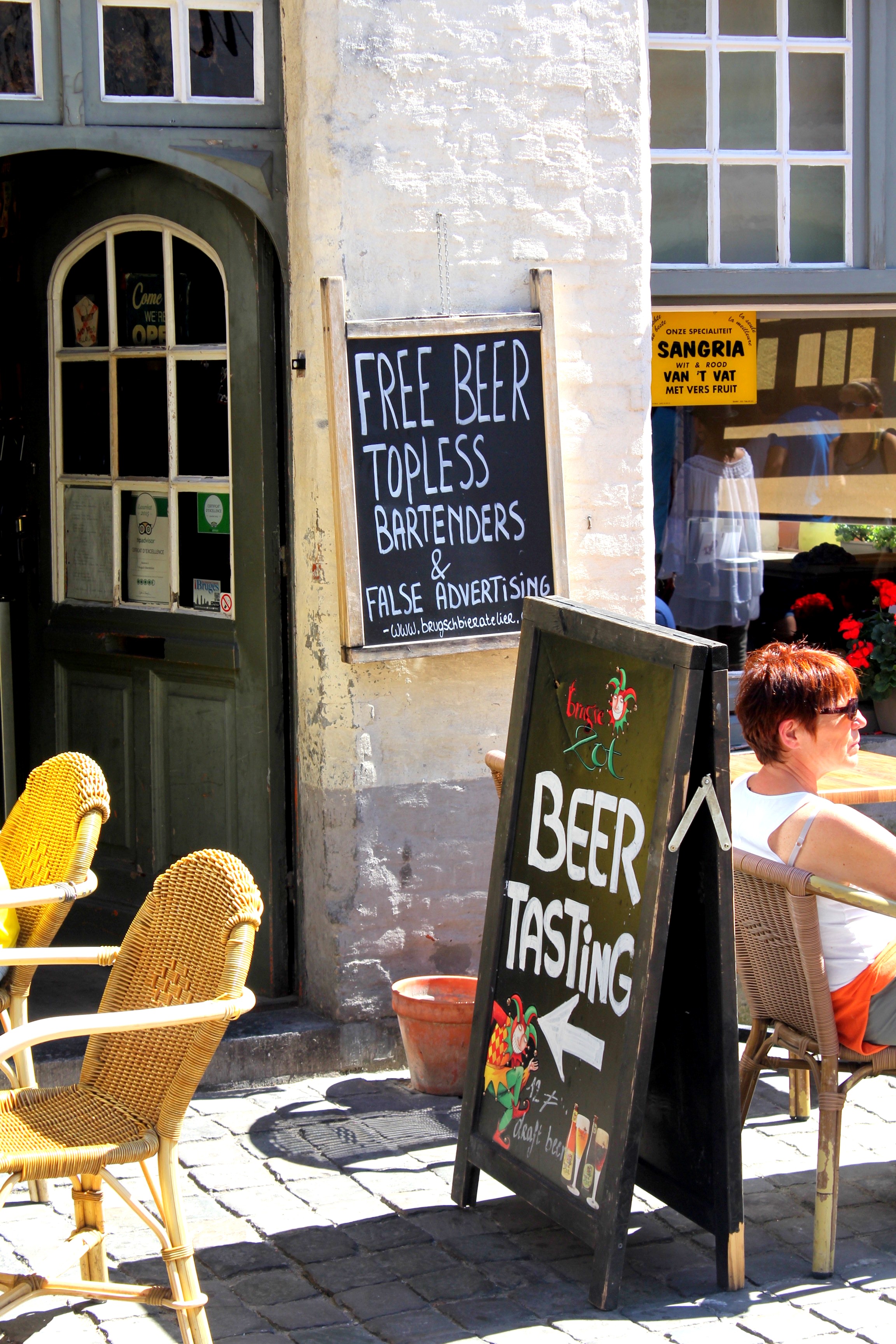
Nice post!
My family lives in Bruges, such an amazing city!
When being in Bruges I love to find some hidden treasures.
X Elien
LikeLike
Thanks ! I was really happy to discover this magical city !
LikeLiked by 1 person
Oh c’est vraiment jolie !!! Je vais mettre cette belle destination dans ma To-do list Travel 😉
LikeLike
Je suis contente de t’avoir inspirée 😀 Si tu fais un article pour ta to do list, n’hésite pas à mettre un lien vers mon article 😉 au fait j’adore ton design de blog ! Et je me demandais comment tu fais pour constamment avoir des commentaires sur tes articles ?
LikeLike
C’est noté ! Merci pour ton compliment 😉 Pour répondre honnêtement à ta question, je suis également surprise lorsque je vois mes articles commentés. Peut être est-ce dû au fait que je prends le temps de lire les articles des autres blogueuses et que je laisse un commentaire quand j’ai aimé. En fait, pour moi le blogging, c’est avant tout du partage et du plaisir, et non une compétition aux commentaires ou aux abonnés. Il y a des articles où j’ai peu de commentaires et ça ne me dérange pas plus que ça, au contraire ça me pousse à m’améliorer 😉
LikeLike
Oui je partage tout à fait ta vision ! J’aime faciliter l’échange et le partage ! 🙂
LikeLiked by 1 person
Bruges is a really beautiful place. I used to live not that far away from it, so I’d often go shopping there.
LikeLike